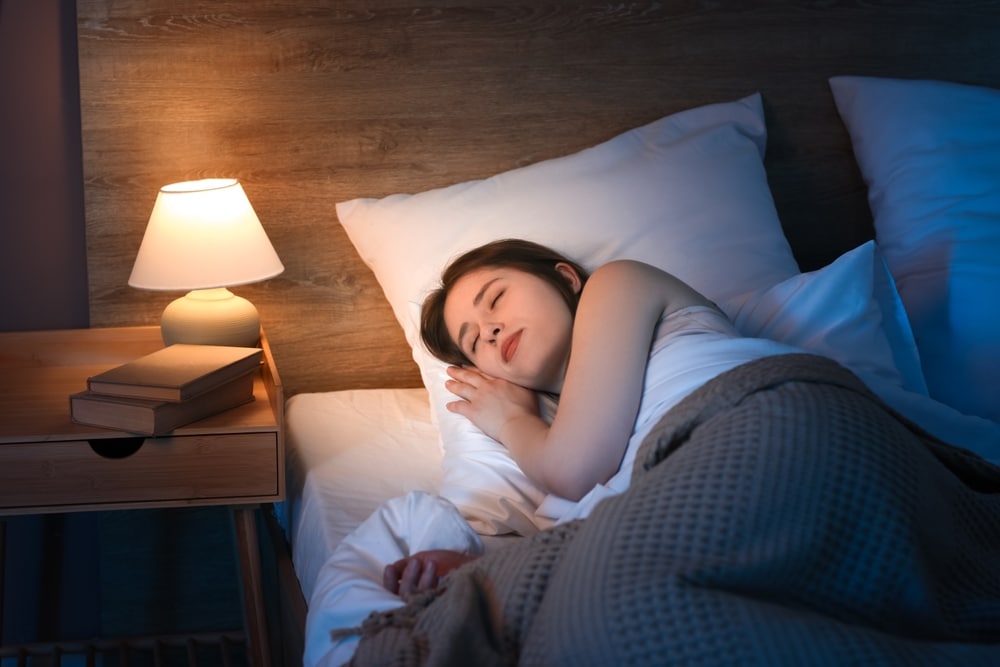Table of Contents
Ever find yourself tossing and turning at night, unable to drift off into a deep, restful sleep? The secret to better sleep might not be in your mattress or bedtime routine but in the color of your bedroom lights! Science shows that certain LED light colors can either help you relax or keep you wired and restless. So, if you’re tired of sleepless nights, it’s time to switch up your lighting. But which LED color light is best for better sleep? Let’s dive in and find out! 🌙💡
The Science Behind Sleep and Lighting
Your body’s circadian rhythm is heavily influenced by light. In nature, exposure to natural sunlight during the day helps maintain alertness and energy, while darkness at night signals the body to prepare for sleep. Artificial lighting, especially the color blue, can interfere with this process. Blue light, emitted by screens and many modern lighting sources, has a short wavelength that can trick your brain into thinking it’s still daytime, which hinders the production of melatonin, the hormone that makes you feel sleepy.
The Best Light Colors for Sleep

On the flip side, warm colors like red, orange, and amber are much better suited for your sleep environment. The soft, dim glow of these colors mimics the natural hues of sunset, helping to cue your brain that it’s time to wind down. Among these, red light is particularly noted for its sleep-promoting properties. Unlike blue or green, red light doesn’t interfere with melatonin production, making it one of the best color lights for sleep.
But does red light help you sleep? Yes! Numerous studies have examined the relationship between red light and sleep. The consensus is that red light promotes calmness and relaxation, making it easier to fall asleep and stay asleep. When used in the evening, a red light can significantly improve your night’s sleep by aligning with your body’s internal clock. Some people might wonder, “What is better for sleep, red or gold?” Both colors have a warm tone, but red light for sleep is considered more effective because of its unique interaction with melatonin production. Gold lighting, while calming, may not have the same level of support for your circadian rhythm.
- Red Light – The most sleep-friendly color because it has the longest wavelength and minimal blue light. It helps maintain natural circadian rhythms and promotes melatonin production.
- Warm Amber or Orange Light – Similar to red light, these warm tones are gentle on the eyes and do not interfere with sleep.
- Dim Warm White Light (2700K or lower) – A soft, warm white light can also be a good option if red or amber isn’t available.
The Worst Light Colors for Sleep

Studies have shown that bright lights in the blue spectrum are some of the worst colors for sleep. As mentioned earlier, blue light suppresses melatonin production and can disrupt your sleep. This is why exposure to screens—like your phone, tablet, or TV—before bed can cause sleep problems. Other light colors like white or cool-toned lights. Which often contain high amounts of blue light, can have the same effect.
In addition to blue and cool white, green light is another color that can affect your biological clock. Although less disruptive than blue, green light can still delay sleep if you are exposed to it in the evening hours. Therefore, if you’re aiming to create the ideal bedroom color for sleep, it’s best to avoid blue, white, and green hues.
- Blue Light – Suppresses melatonin and disrupts sleep patterns. Commonly found in phone screens, computers, and cool white LEDs.
- White Light (Cool or Daylight 5000K+) – Contains a high amount of blue wavelengths, which can trick the brain into thinking it’s daytime.
- Green Light – Has a moderate impact on melatonin but still not as sleep-friendly as red.
When choosing the best LED color for sleep, consider your bedroom environment carefully. Soft, warm-toned lights are ideal for creating a relaxing atmosphere. Look for LED lights that offer settings in red or amber hues, as these light colors are the least likely to disrupt your sleep. If you want to optimize your sleep, consider dimmable lights that allow you to adjust brightness levels as well. High endurance performance during the day depends on a good night’s rest. So, creating a bedroom with the right lighting is crucial.
Avoiding Sleep Inertia
Another reason to be mindful of your lighting choices is sleep inertia. Sleep inertia is the groggy, sluggish feeling you experience when you wake up suddenly, usually from a deep stage of sleep. Waking up in a room filled with harsh or bright lights can intensify this effect. Using soft, warm lights that gradually brighten in the morning can help ease you into wakefulness, reducing sleep inertia and making it easier to get out of bed.
What Colors Help You Sleep?
When deciding what color helps you sleep, it’s essential to consider not only the lighting but also the overall color scheme of your bedroom. Warm colors for walls, such as soft reds, oranges, and beiges, can promote a sense of coziness and tranquility. Cool tones like blues and greens are typically relaxing. But not ideal for evening lighting due to their potential to disrupt melatonin levels.
Conclusion
In conclusion, the best led color for sleep is undoubtedly red. Whether you opt for a red light for sleep or choose a combination of warm. The key is to avoid blue light and any other hues that may interfere with your body’s biological clock. Create a bedroom that supports your circadian rhythm. You’ll improve your chances of enjoying a restful and restorative night of sleep. So, next time you’re wondering, “What color light helps you sleep?” remember that red is your best bet.


